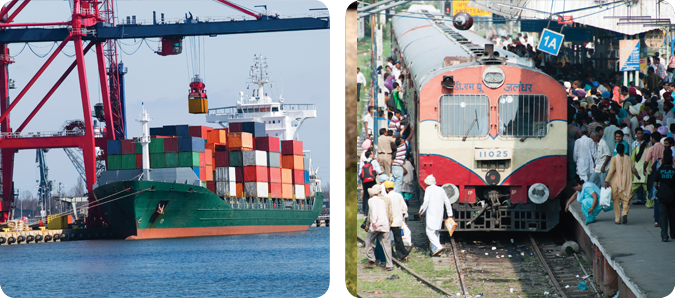
Economics
Introduction
What is the relationship between wealth and travel? Do we travel more often as our incomes increase? And how is travel affected by globalization and the rise of international trade?
For a long time, it was assumed that there was a straightforward relationship between travel and income: as income grows, travel distances lengthen and leisure travel increases. This has important consequences: the economic growth of developing nations is desirable, but unless we plan for the consequences, it could mean an unmanageable explosion in travel.
When a billion Chinese have the disposable income of the Japanese, can they really all come to Stratford-upon-Avon? Alan Baxter CBE
Key Aspects
Travel and Political Economy
Capitalism and International Trade
Can capitalism develop without long distance travel? The search for new trading routes has inspired travel and exploration for hundreds of years, and the mutual advantages of free international trade, as outlined by Adam Smith, are now widely recognized through organisations such as the WTO. In closed economies, including many communist states, travel is restricted and economic self-sufficiency is often promoted. As international trade has increased, so too has the need for long-distance transport to service it, inspiring the huge growth of shipping and aviation freight.
Transport Economics
Travel as a disutility and derived demand?
The economist’s view of travel has often been grounded on a perception of it as a disutility to be minimized; a necessary nuisance, the demand for which is derived from some other activity. Does this stand up to scrutiny? As we have seen elsewhere, the motivations for travel cannot be reduced to financial costs and benefits. Travel economists, such as Daniel McFadden, have begun to incorporate behavioural factors into forecasting. Economic forecasting models are an aid to thinking, but not a substitute for it.
Wealth and Travel
Travel and Income
Studies have shown that travel distances increase as GDP per capita grows. At the same time, the availability of higher speed travel also increases. As a result some economists have suggested that, as economies grow, we see travel patterns shift from low-speed travel (such as walking, riding, or public bus) to greater use of cars, to widespread use of aviation and high speed trains.
Travel and Poverty
Recent studies have shown that a lack of access to transport and travel can exacerbate poverty, making it more difficult to access key services, education and jobs. Where access to transport is good and affordable, economic activity is greater and wealth increases. Social planning and transport policy have the potential to provide solutions to these problems.
Travel and Migration
Economic change can be a huge driver of travel in the form of migration. People will move en masse to sources of employment: industrialisation, for example, has spurred huge internal migration in China from the rural hinterland to the cities. In other areas, the discovery of natural resources has attracted great migration, as seen with the oil boom in the Gulf of Mexico. On other occasions, states encourage migration when they are short of labour, as seen after the Second World War when Britain appealed for workers from the West Indies to come and settle in the UK.
As affluence grows, it gets easier to travel faster and further. But research shows that, despite this, the average travel time in all societies remains steady at roughly an hour a day. The implication is that people are choosing to increase the distance they regularly travel, rather than opting for shorter journey times. David Metz, The Limits to Travel (2008)
Practical Implications
- Travel in the developing world – will we see a massive increase in travel? Forecasts show increasing demand for international travel from Asia. International and domestic travel already account for 10% of global employment and GDP and it is possible this will rise further.
- In developed countries the picture is different. In some modes, particularly car, we are seeing a stagnation of travel across advanced economies, which has led to the concept of ‘Peak Car’. Does this imply that there are limits to human travel demand, or have we just reached a temporary equilibrium?
- Transport modelling often measures travel demand in terms of financial costs and benefits. Critics have argued that such models struggle to represent the full dimensions of human travel behavior and motivation. Is money really all that determines our desire to travel?
Further Reading/Resources
David Metz: The Limits to Travel: How far will you go? (2008)
Phil Goodwin, “Three Views on ‘Peak Car’”, World Transport Policy & Practice 17 (4) (2011)
Social Exclusion Unit, Making the connections: transport and social exclusion. (2003) UK Cabinet Office
Daniel McFadden, ‘Disaggregate Behavioral Travel Demand’s RUM Side: A 30-Year Retrospective’, in The leading edge of travel behavior research, ed. David Heshner (2001)
Key Questions
What is the relationship between wealth and travel?
Can travel be adequately explained in terms of economic costs and benefits?

